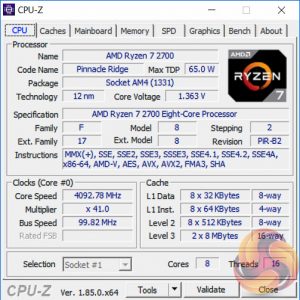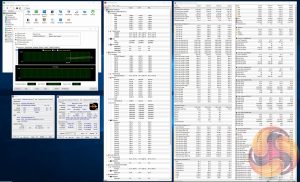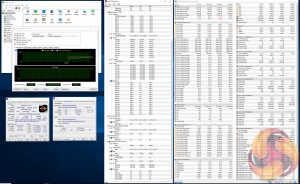Manual CPU Overclocking:
To test the ASUS ROG Strix B450-I Gaming motherboard’s CPU overclocking potential, we set the CPU core voltage no higher than 1.4V and push for the highest stable clock speed. We maintain the DRAM frequency at 3200MHz to take memory stability out of the overclocking equation. Once the highest clock speed for 1.4V is achieved we see if there is potential to reduce the voltage while maintaining system stability.
For overclocking we opted for 4.1GHz which is the highest all-core stable frequency our CPU sample is capable of. In terms of voltages we opted for a positive offset of 0.375v which resulted in about 1.36 volts. Initially we achieved 4.1GHz with 1.365v fixed voltage and noticed unusually high power consumption at idle. However, switching to the offset voltage mode didn't seem to reduce that power consumption at all despite having the “Ryzen Balanced” power plan selected in Windows 10.
Motherboard Sensors
There were no temperature sensors on the ASUS ROG Strix B450-I Gaming specifically labelled as “VRM” or “MOS”, but there were two sensors – “Motherboard” and “Temperature 3/4/5/6” – that could plausibly have been VRM sensors. These rose from 39/40 degrees Celsius at stock load to 41/48 at overclocked load.
Overclocked Performance
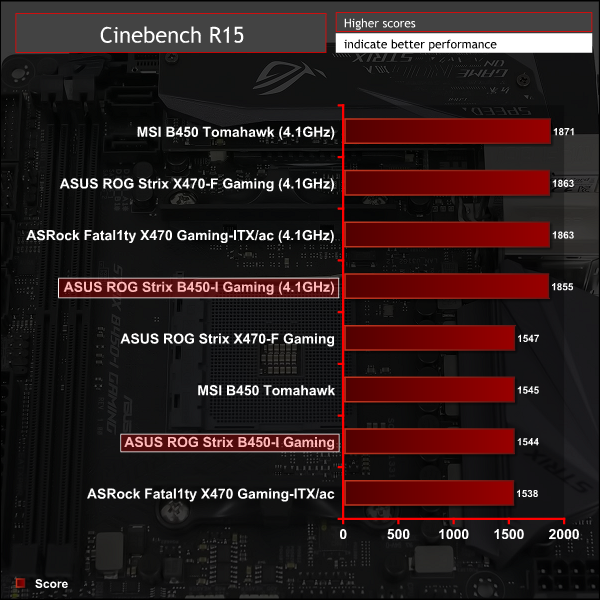
System Power Consumption
We leave the system to idle on the Windows 10 desktop for 10 minutes before taking a reading. For CPU load results we run AIDA64 CPU, FPU, Cache and Memory stress tests and take a reading after 10 minutes. The power consumption of our entire test system (at the wall) is shown in the chart.
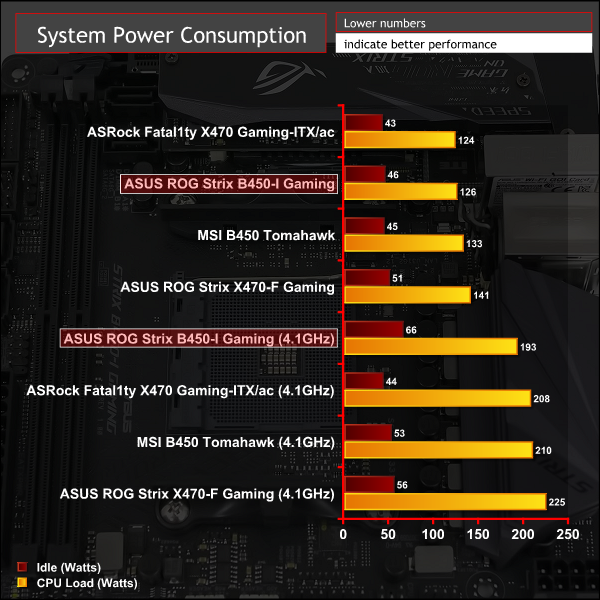
System power consumption was fairly typical under stock and load, if a little bit on the low side perhaps owing to the VRM's efficiency. However, overclocked idle power consumption was very high and we're not quite sure as to why. Even after using a voltage offset and the Ryzen Balanced or Power Saver Windows 10 power plans we were not able to get power consumption down despite the CPU having clocked down to idle speeds.
12-volt EPS Power Consumption
During the 10-minute stress test as specified above, we record the direct CPU power consumption drawn through the EPS 8-pin socket using modified EPS 8-pin cables that have a Tinkerforge Voltage/Current 1.0 bricklet intercepting and monitoring the power flow from the power supply. That bricklet then reports its data to a Tinkerforge Master Brick. All the data collected by the Tinkerforge Master Brick is passed into an external laptop over a USB connection and analysed in the Cybenetics Powenetics Project software.
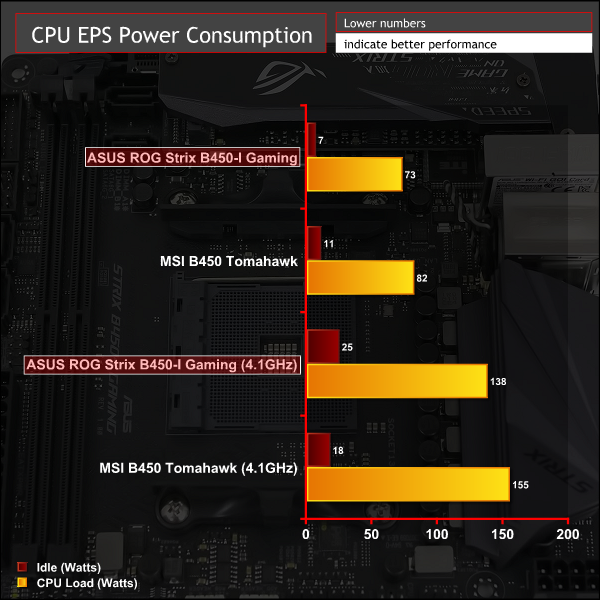
Stock CPU power consumption represents approximately 18% for idle and 65% for load of the system total, when adjusted for PSU efficiency*.
Overclocked CPU power consumption represents approximately 44% for idle and 78% for load of the system total, when adjusted for PSU efficiency*.
*Approximate Seasonic SS-760XP PSU efficiency at:
- 50-watts: 86%
- 125-watts: 89%
- 200-watts: 90%
The Powenetics software provides the power consumption at 12v input (pre-CPU VRM), and the Ryzen CPU provides the power consumption (CPU Package Power) after the CPU VRM has translated the power into a useful format (post-VRM). Based on this we can provide a rough estimate of VRM efficiency and “wasted” energy that likely translates into heat.
- Stock: 70-watts reported by CPU, 73-watts recorded, approximately 96% efficient and 3-watts of heat output.
- Overclocked: 128-watts reported, 138-watts recorded, approximately 93% efficient and 10-watts of heat output.
 KitGuru KitGuru.net – Tech News | Hardware News | Hardware Reviews | IOS | Mobile | Gaming | Graphics Cards
KitGuru KitGuru.net – Tech News | Hardware News | Hardware Reviews | IOS | Mobile | Gaming | Graphics Cards


